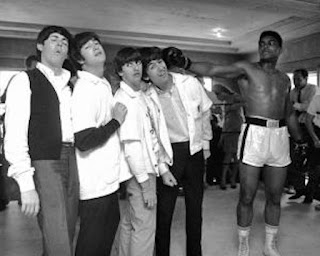
 One of the paintings that displays my passion for fashion
is a triptych of Mina Miller Edison that I painted in 2014 as the centerpiece of the Fort Myers Founding
Females portrait show. That was an exhibition that was designed to introduce Southwest
Florida residents and visitors to some of
Fort Myers’ most prominent early female leaders, civic activists, philanthropists and
entrepreneurs. Notice how I gave Mina a vibrant, free-flowing gown that reflects her youth, self-confidence and penchant for making a statement.
One of the paintings that displays my passion for fashion
is a triptych of Mina Miller Edison that I painted in 2014 as the centerpiece of the Fort Myers Founding
Females portrait show. That was an exhibition that was designed to introduce Southwest
Florida residents and visitors to some of
Fort Myers’ most prominent early female leaders, civic activists, philanthropists and
entrepreneurs. Notice how I gave Mina a vibrant, free-flowing gown that reflects her youth, self-confidence and penchant for making a statement.
The show was exhibited in the Caretaker’s Cottage at the
Edison & Ford Winter Estates from mid-December of 2014 through May 27 of
2015. During that time, nearly 200,000 people
saw the show. These viewers learned that Mina Edison
played an instrumental role during the four decades preceding her death in 1947 in helping Fort
Myers gain a national reputation as center of cultural and tourism.
 I called the painting Mina’s Touch to underscore that she placed her imprint on the town we know and love
today. Triptychs are paintings that consist of three interconnected panels. Each of the panels in Mina’s Touch measure 24 x 72 inches. I painted each panel on unstretched canvas so that I could roll them up and take them on the plane when I flew back to Southwest Florida.
I called the painting Mina’s Touch to underscore that she placed her imprint on the town we know and love
today. Triptychs are paintings that consist of three interconnected panels. Each of the panels in Mina’s Touch measure 24 x 72 inches. I painted each panel on unstretched canvas so that I could roll them up and take them on the plane when I flew back to Southwest Florida. The painting was something of a departure for
me. While it features the loose and lively brushstrokes that I prefer, I
didn't use either drips and splatters. This made the final result
more of an Impressionist and less of an Expressionist painting. The shift in genre was a byproduct of spending several weeks painting in Claude Monet’s gardens in Giverny, France
and attending a workshop in California where I studied portraiture theory
and technique.
The painting was something of a departure for
me. While it features the loose and lively brushstrokes that I prefer, I
didn't use either drips and splatters. This made the final result
more of an Impressionist and less of an Expressionist painting. The shift in genre was a byproduct of spending several weeks painting in Claude Monet’s gardens in Giverny, France
and attending a workshop in California where I studied portraiture theory
and technique.When I got back in my studio in Matlacha Island, I mounted the canvas on one inch thick, acid free Gator board that the Edison & Ford Winter Estates special ordered for the occasion. I based the painting on a photo I got from the Edison Historical Society. The dog is Cinnamon, the family dog.
If you didn’t see the portrait while it was in the Edison Ford Caretaker’s Cottage, you can see it during store hours at the Edison Ford Shoppe at the Bell Tower Mall.















































